A New Shear Strength Model with Structural Damage for Red Clay in the Qinghai-Tibetan Plateau
Abstract
1. Introduction
2. Materials and Methods
2.1. Study Site
2.2. Materials
2.3. Specimens Preparation
2.4. Testing Procedure
2.4.1. Freeze–Thaw Cycling Tests
2.4.2. Triaxial Shear Tests
2.4.3. Nuclear Magnetic Resonance Tests
3. Results
3.1. Triaxial Shear Test Results
3.2. Nuclear Magnetic Resonance Test Results
4. Discussion
4.1. Analysis of Shear Strength
4.2. Analysis of Microstructure
4.3. Extended Mohr–Coulomb Strength Model
5. Conclusions
- As the number of FTCs increases, the peak deviator stress of red clay declines significantly, and the decreasing trend can be described in three phases: rapid reduction, slow reduction, and stabilization.
- The T2 spectrum curves of red clay exhibit a distinct bimodal distribution characteristic. The primary type of pores within the specimens is micropores. After FTCs, part of the micropore develops into a macropore, leading to structural damage.
- The mechanism of the shear strength deterioration of red clay after FTCs is revealed. The phase transformation of water inside red clay causes a frost-heaving force to act on the soil skeleton and pore volume expansion. The area of macropores inside the red clay increases, leading to a looser structure and a deterioration of the shear strength of the soil.
- An extended Mohr–Coulomb strength model considering the structural damage caused by the action of FTCs is established. The shear strength of red clay after FTCs can be well predicted by the extended strength model. In future work, more freeze–thaw cycles and experimental studies will be conducted to verify the proposed model. The research results have a reference value for exploring the disaster mechanism of freezing and thawing in the QTP.
Author Contributions
Funding
Institutional Review Board Statement
Informed Consent Statement
Data Availability Statement
Conflicts of Interest
References
- Zhang, Y.Z.; Pu, S.Y.; Li, R.T.Y.M.; Zhang, J. Microscopic and mechanical properties of undisturbed and remoulded red clay from Guiyang, China. Sci. Rep. 2020, 10, 18003. [Google Scholar] [CrossRef]
- Sani, J.E.; Etim, R.K.; Joseph, A. Compaction behaviour of lateritic soil–calcium chloride mixtures. Geotech. Geol. Eng. 2019, 37, 2343–2362. [Google Scholar] [CrossRef]
- Lang, L.; Chen, B.W.; Chen, B. Strength evolutions of varying water content-dredged sludge stabilized with alkali-activated ground granulated blast-furnace slag. Constr. Build. Mater. 2021, 275, 122111. [Google Scholar] [CrossRef]
- Zeng, L.; Yu, H.C.; Gao, Q.F.; Liu, J.; Liu, Z.H. Evolution of tensile properties of compacted red clay under wet and dry cycles. KSCE J. Civ. Eng. 2021, 26, 606–618. [Google Scholar] [CrossRef]
- Kuang, X.; Jiao, J.J. Review on climate change on the Tibetan Plateau during the last half century. J. Geophys. Res.-Atmos. 2016, 121, 3979–4007. [Google Scholar] [CrossRef]
- Zhang, Z.Q.; Wu, Q.B.; Jiang, G.L.; Gao, S.R.; Chen, J.; Liu, Y.Z. Changes in the permafrost temperatures from 2003 to 2015 in the Qinghai-Tibet Plateau. Cold Reg. Sci. Technol. 2020, 169, 102904. [Google Scholar] [CrossRef]
- Lu, J.G.; Tan, L.L.; Yang, H.H.; Wan, X.S.; Wang, Y.D.; Yan, Z.G. Experimental study on the hydro-thermal-deformation characteristics of cement-stabilized soil exposed to freeze-thaw cycles. Front. Earth Sci. 2023, 10, 1041249. [Google Scholar] [CrossRef]
- Xue, P.; Fu, Q.; Li, T.X.; Liu, D.; Hou, R.J.; Li, Q.L.; Li, M.; Meng, F. Effects of biochar and straw application on the soil structure and water-holding and gas transport capacities in seasonally frozen soil areas. J. Environ. Manag. 2022, 301, 113943. [Google Scholar] [CrossRef]
- Ma, W.; Wang, D.Y. Frozen Soil Mechanics; Science Press: Beijing, China, 2014. [Google Scholar]
- Wang, D.Y.; Ma, W.; Niu, Y.H.; Chang, X.X.; Wen, Z. Effects of cyclic freezing and thawing on mechanical properties of Qinghai-Tibet clay. Cold Reg. Sci. Technol. 2007, 48, 34–43. [Google Scholar] [CrossRef]
- Liu, J.K.; Chang, D.; Yu, Q.M. Influence of freeze-thaw cycles on mechanical properties of a silty sand. Eng. Geol. 2016, 210, 23–32. [Google Scholar] [CrossRef]
- Tang, L.; Cong, S.Y.; Geng, L.; Ling, X.Z.; Gan, F.D. The effect of freeze-thaw cycling on the mechanical properties of expansive soils. Cold Reg. Sci. Technol. 2018, 145, 197–207. [Google Scholar] [CrossRef]
- Liu, X.Q.; Liu, J.K.; Tian, Y.H.; Chang, D.; Hu, T.F. Influence of the freeze-thaw effect on the Duncan-Chang model parameter for lean clay. Transp. Geotech. 2019, 21, 100273. [Google Scholar] [CrossRef]
- Tang, Y.Q.; Yan, J.J. Effect of freeze-thaw on hydraulic conductivity and microstructure of soft soil in Shanghai area. Environ. Earth Sci. 2015, 73, 7679–7690. [Google Scholar] [CrossRef]
- Ishikawa, T.; Tokoro, T.; Miura, S. Influence of freeze-thaw action on hydraulic behavior of unsaturated volcanic coarse-grained soils. Soils Found. 2016, 56, 790–804. [Google Scholar] [CrossRef]
- Rui, D.; Ji, M.J.; Nakamur, D.; Suzuki, T. Experimental study on gravitational erosion process of vegetation slope under freeze–thaw. Cold Reg. Sci. Technol. 2018, 151, 168–178. [Google Scholar] [CrossRef]
- Zou, W.L.; Ding, L.Q.; Han, Z.; Wang, X.Q. Effects of freeze-thaw cycles on the moisture sensitivity of a compacted clay. Eng. Geol. 2020, 278, 105832. [Google Scholar] [CrossRef]
- Cui, Z.D.; He, P.P.; Yang, W.H. Mechanical properties of a silty clay subjected to freezing-thawing. Cold Reg. Sci. Technol. 2014, 98, 26–34. [Google Scholar] [CrossRef]
- Wang, D.; Liu, E.L.; Yang, C.S.; Liu, Y.Q.; Zhu, S.X.; Yu, Q.H. Dynamic mechanical characteristics of frozen subgrade soil subjected to freeze-thaw cycles. J. Mt. Sci. 2023, 20, 242–255. [Google Scholar] [CrossRef]
- Hotineanu, A.; Bouasker, M.; Aldaood, A.; Al-Mukhtar, M. Effect of freeze–thaw cycling on the mechanical properties of lime-stabilized expansive clays. Cold Reg. Sci. Technol. 2015, 119, 151–157. [Google Scholar] [CrossRef]
- Zhang, W.Y.; Guo, A.B.; Lin, C. Effects of cyclic freeze and thaw on engineering properties of compacted loess and lime-stabilized loess. J. Mater. Civil Eng. 2019, 31, 04019205. [Google Scholar] [CrossRef]
- Lu, Y.; Liu, S.H.; Zhang, Y.G.; Li, Z.; Xu, L. Freeze-thaw performance of a cement-treated expansive soil. Cold Reg. Sci. Technol. 2020, 170, 102926. [Google Scholar] [CrossRef]
- Feng, D.C.; Lin, B.; Zhang, F.; Feng, X. A review of freeze-thaw effects on soil geotechnical properties. Sci. Sin. Technol. 2017, 47, 111–127. [Google Scholar] [CrossRef]
- Qi, J.L.; Vermeer, P.A.; Cheng, G. A review of the influence of freeze-thaw cycles on soil geotechnical properties. Permafr. Periglac. 2006, 17, 245–252. [Google Scholar] [CrossRef]
- Zhang, Y.; Bing, H.; Yang, C.S. Influences of freeze-thaw cycles on mechanical properties of silty clay based on SEM and MIP test. Chin. J. Rock Mech. Eng. 2015, 34 (Suppl. S1), 3597–3603. [Google Scholar] [CrossRef]
- Xu, J.; Li, Y.F.; Lan, W.; Wang, S.H. Shear strength and damage mechanism of saline intact loess after freeze-thaw cycling. Cold Reg. Sci. Technol. 2019, 164, 102779. [Google Scholar] [CrossRef]
- Li, Z.; Liu, L.L.; Yan, S.H.; Zhang, M.K.; Xia, J.J.; Xie, Y.L. Effect of freeze-thaw cycles on mechanical and porosity properties of recycled construction waste mixtures. Constr. Build. Mater. 2019, 210, 347–363. [Google Scholar] [CrossRef]
- Fan, W.; Yang, P.; Yang, Z.J. Freeze-thaw impact on macropore structure of clay by 3D X-ray computed tomography. Eng. Geol. 2021, 280, 105921. [Google Scholar] [CrossRef]
- Xu, W.B.; Wang, X.C. Effect of freeze-thaw cycles on mechanical strength and microstructure of silty clay in the Qinghai-Tibet Plateau. J. Cold Reg. Eng. 2022, 36, 04021018. [Google Scholar] [CrossRef]
- Feng, S.X.; Xu, Z.G.; Chai, J.R.; Li, Y. Using pore size distribution and porosity to estimate particle size distribution by nuclear magnetic resonance. Soils Found. 2020, 60, 1011–1019. [Google Scholar] [CrossRef]
- Song, Z.Y.; Zhang, Z.H.; Du, X.L. Shear strength of compacted bentonite saturated with saline solutions under different specimen saturation methods. Int. J. Geomech. 2024, 24, 04024004. [Google Scholar] [CrossRef]
- Song, Z.Y.; Zhang, Z.H.; Lu, Y.Q.; Du, X.L. Shrinkage behavior of compacted bentonite considering physicochemical effects. Sci. Total Environ. 2024, 906, 167547. [Google Scholar] [CrossRef]
- Li, T.G.; Kong, L.W.; Wang, J.T.; Wang, F.H. Trimodal pore structure evolution characteristics and mechanical effects of expansive soil in seasonally frozen areas based on NMR test. Rock Soil Mech. 2021, 42, 2741–2754. [Google Scholar] [CrossRef]
- Ye, W.J.; Qiang, Y.H.; Jing, H.J.; Zou, Y. Freeze-thaw cycle experiment of loess paleosol with different water content based on nuclear magnetic resonance. J. Eng. Geol. 2022, 30, 144–153. [Google Scholar] [CrossRef]
- Wang, X.W.; Li, J.D.; Wang, X.; Zhang, Y.J.; Jiang, D.J.; Zhao, G. Study on strength and microstructure of red clay reinforced by F1 ionic soil stabilizer. Appl. Sci. 2022, 12, 9831. [Google Scholar] [CrossRef]
- Chen, C.; Zhang, C.Z.; Liu, X.; Pan, X.A.; Pan, Y.A.; Jia, P.J. Effects of freeze-thaw cycles on permeability behavior and desiccation cracking of Dalian red clay in China considering saline intrusion. Sustainability 2023, 15, 3858. [Google Scholar] [CrossRef]
- Ye, W.J.; Liu, K.; Yang, G.S.; Ma, W.C.; Xie, Z.W. Experimental study on shear strength deterioration of loess under freeze-thaw cycling. Sci. Technol. Eng. 2018, 18, 313–318. [Google Scholar] [CrossRef]
- Wang, M.; Meng, S.J.; Sun, Y.Q.; Fu, H.Q. Shear strength of frozen clay under freezing-thawing cycles using triaxial tests. Earthq. Eng. Eng. Vib. 2018, 17, 761–769. [Google Scholar] [CrossRef]
- Brownstein, K.R.; Tarr, C.E. Importance of classical diffusion in NMR studies of water in biological cells. Phys. Rev. A 1979, 19, 2446. [Google Scholar] [CrossRef]
- Jaeger, F.; Shchegolikhina, A.; As, H.V.; Schaumann, G.E. Proton NMR relaxometry as a useful tool to evaluate swelling processes in peat soils. Open Magn. Reson. J. 2010, 3, 27–45. [Google Scholar] [CrossRef]
- Kenyon, W.E.; Kolleeny, J.A. NMR surface relaxivity of calcite with adsorbed Mn2+. J. Colloid Interf. Sci. 1995, 170, 502–514. [Google Scholar] [CrossRef]
- Bryar, T.R.; Daughney, C.J.; Knight, R.J. Paramagnetic effects of iron (III) species on nuclear magnetic relaxation of fluid protons in porous media. J. Magn. Reson. 2000, 142, 74–85. [Google Scholar] [CrossRef]

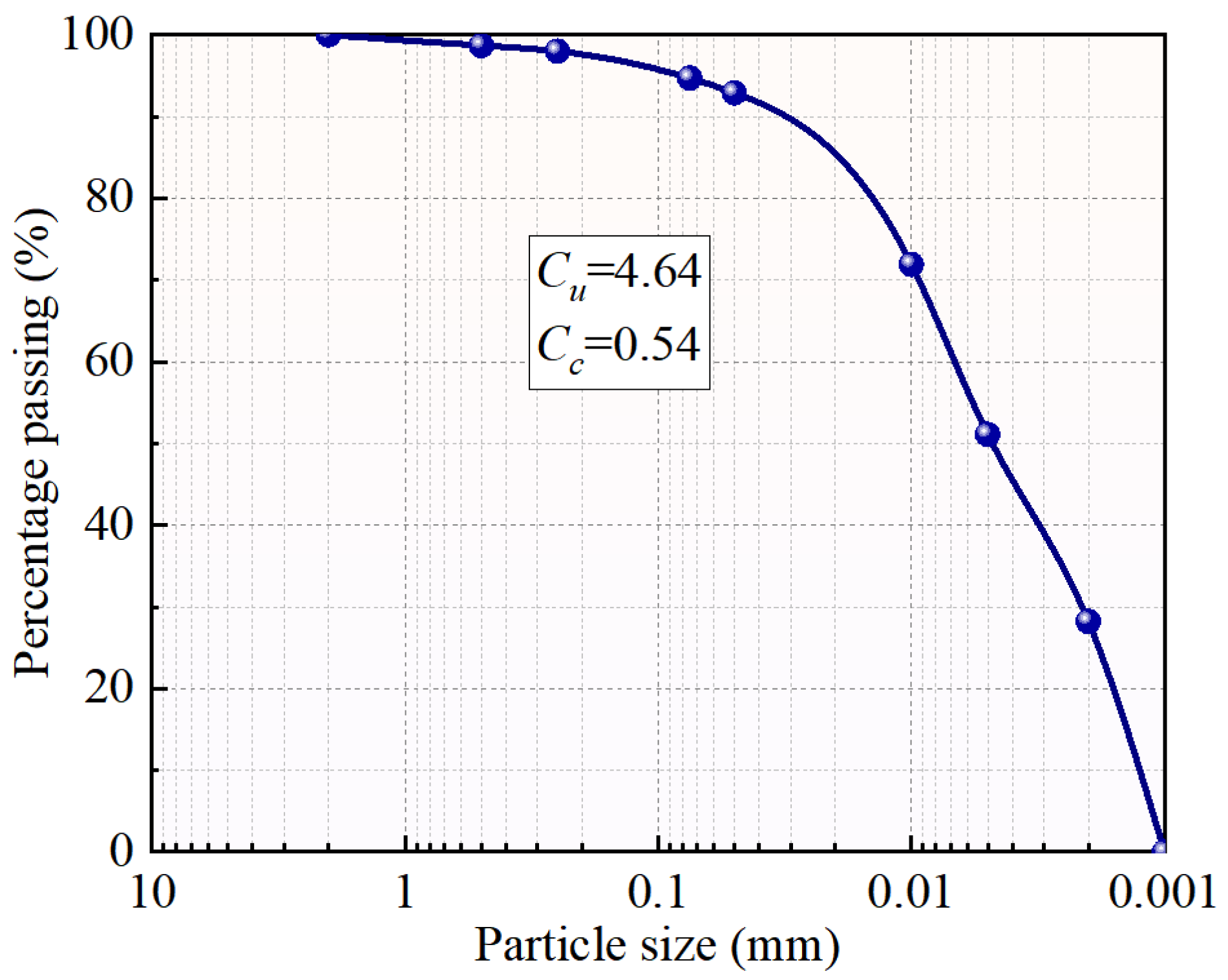
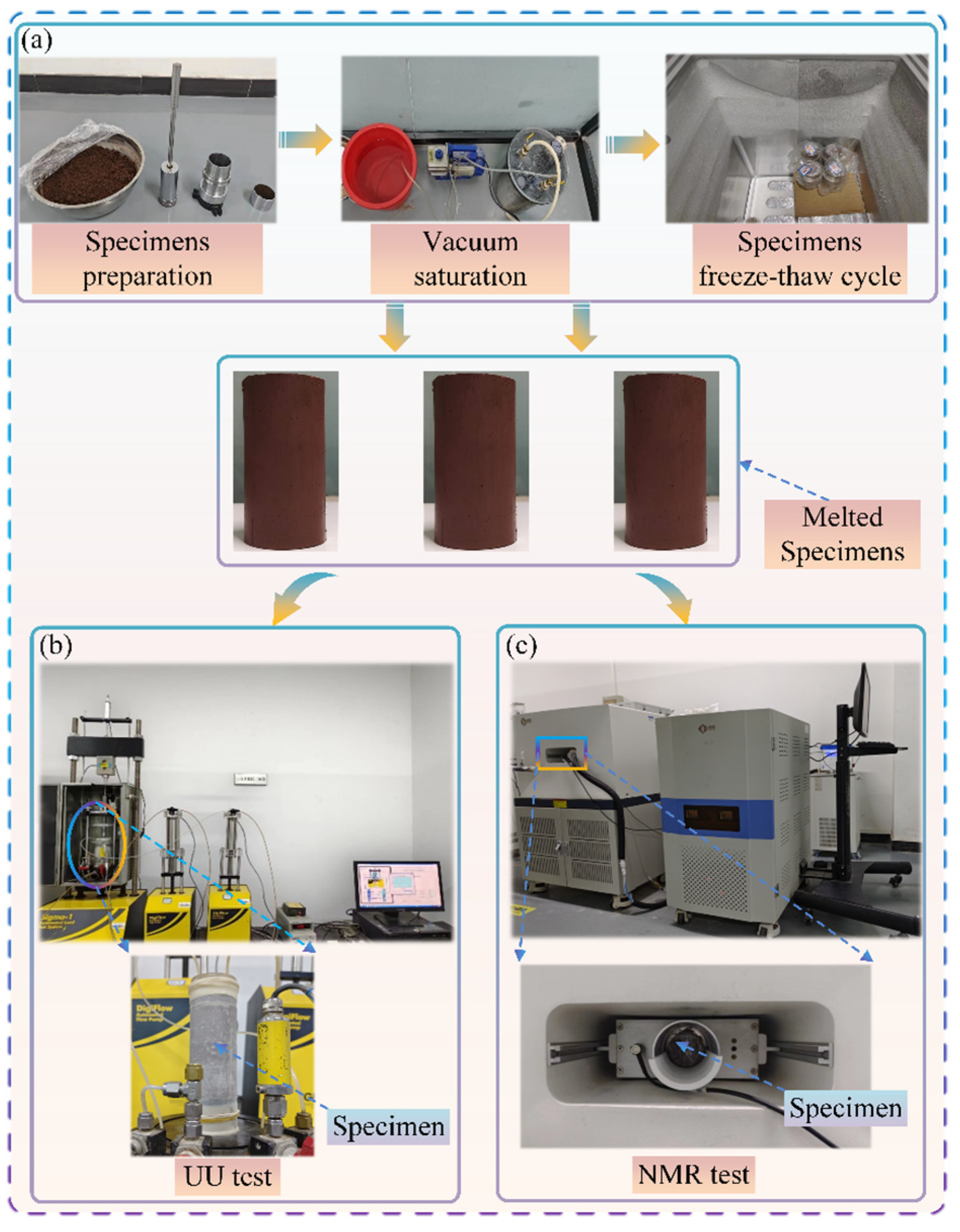
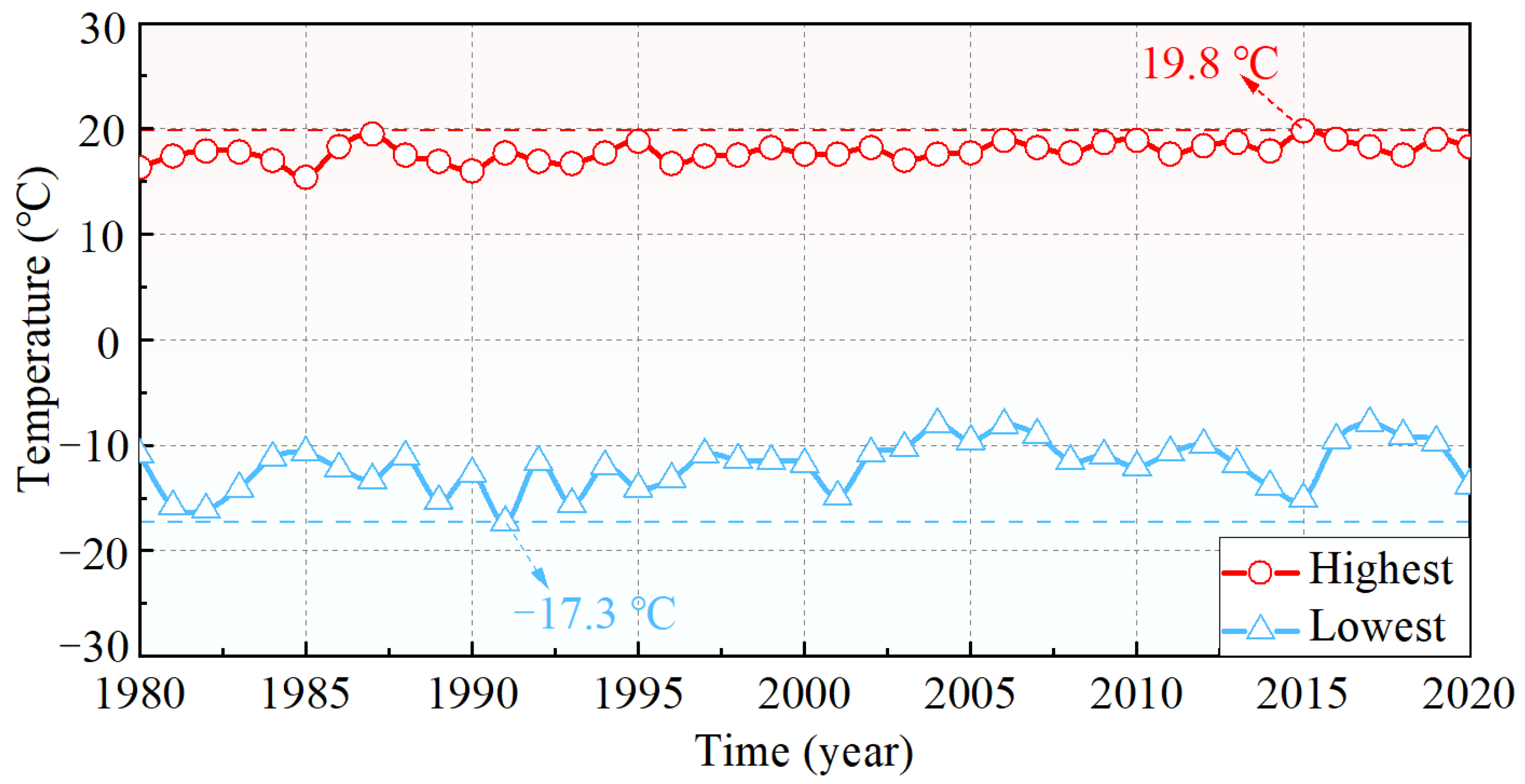
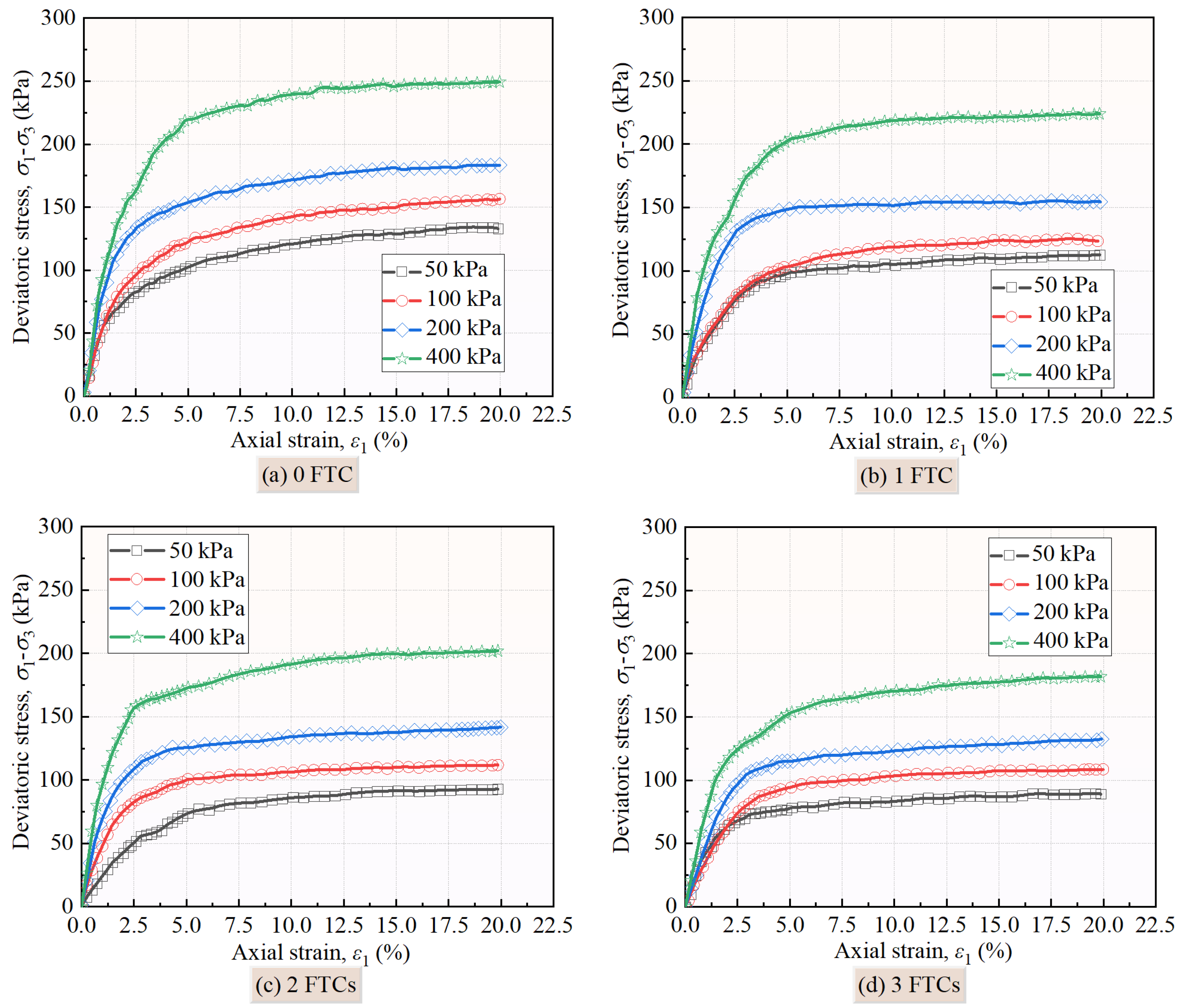
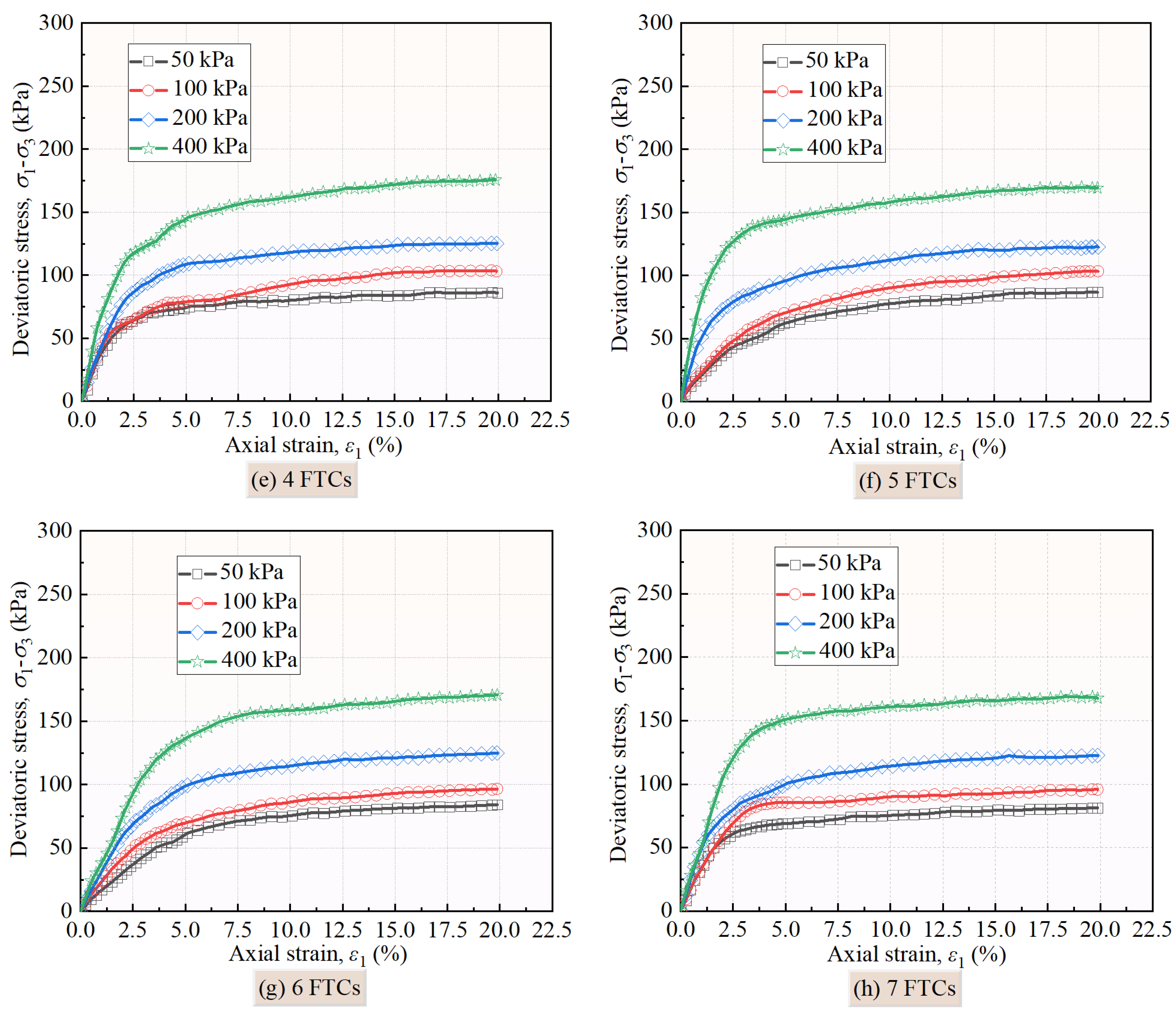
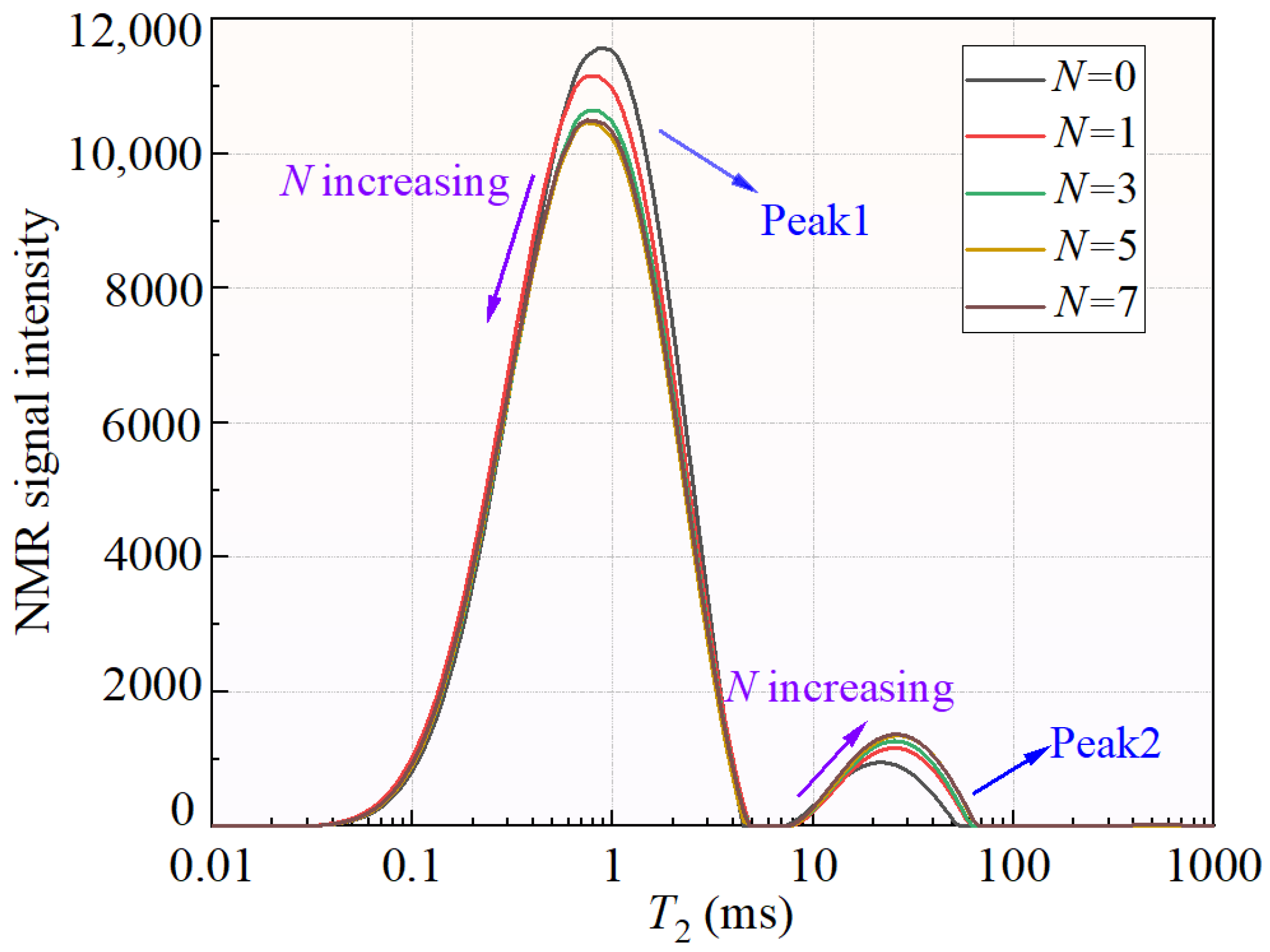
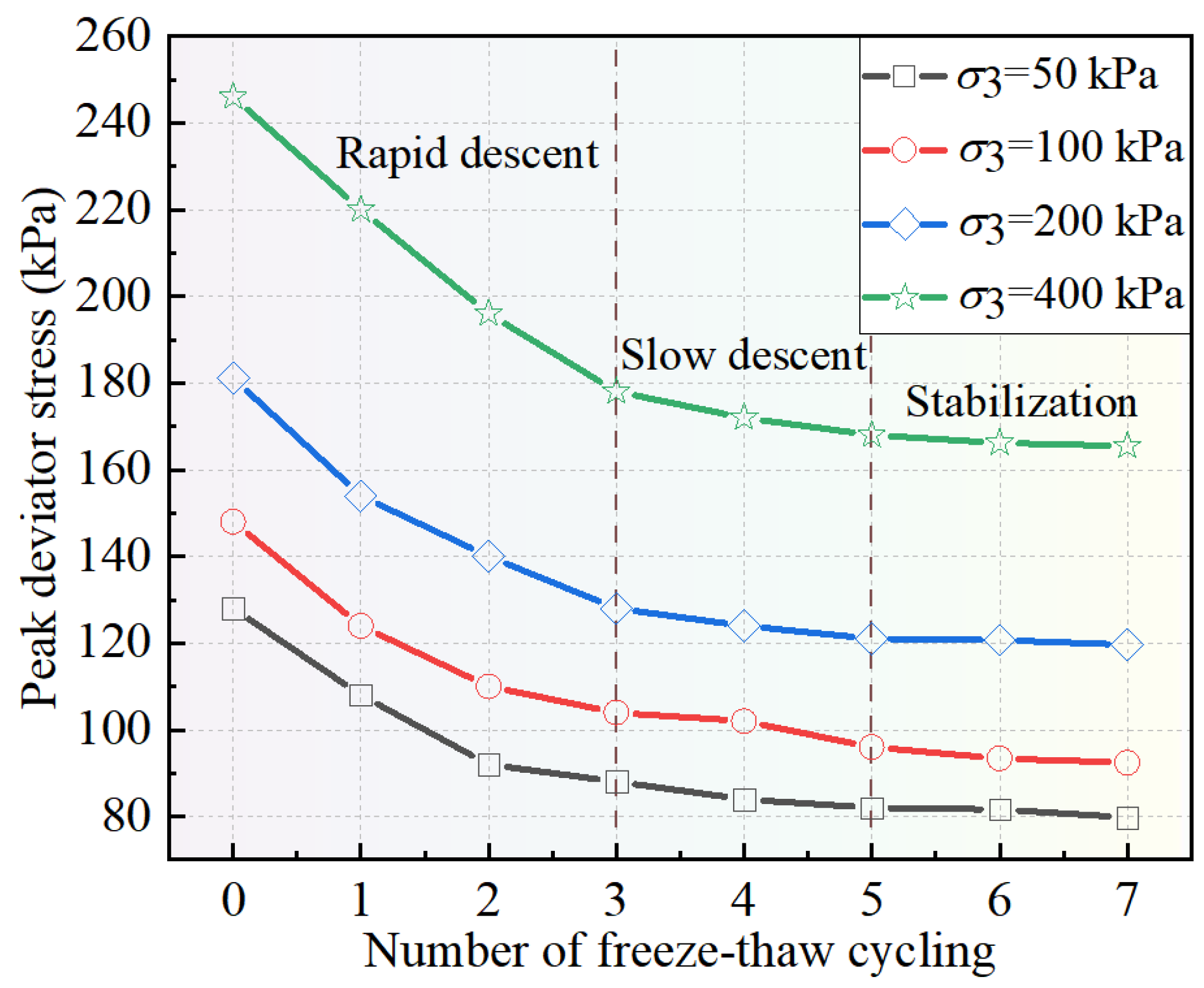
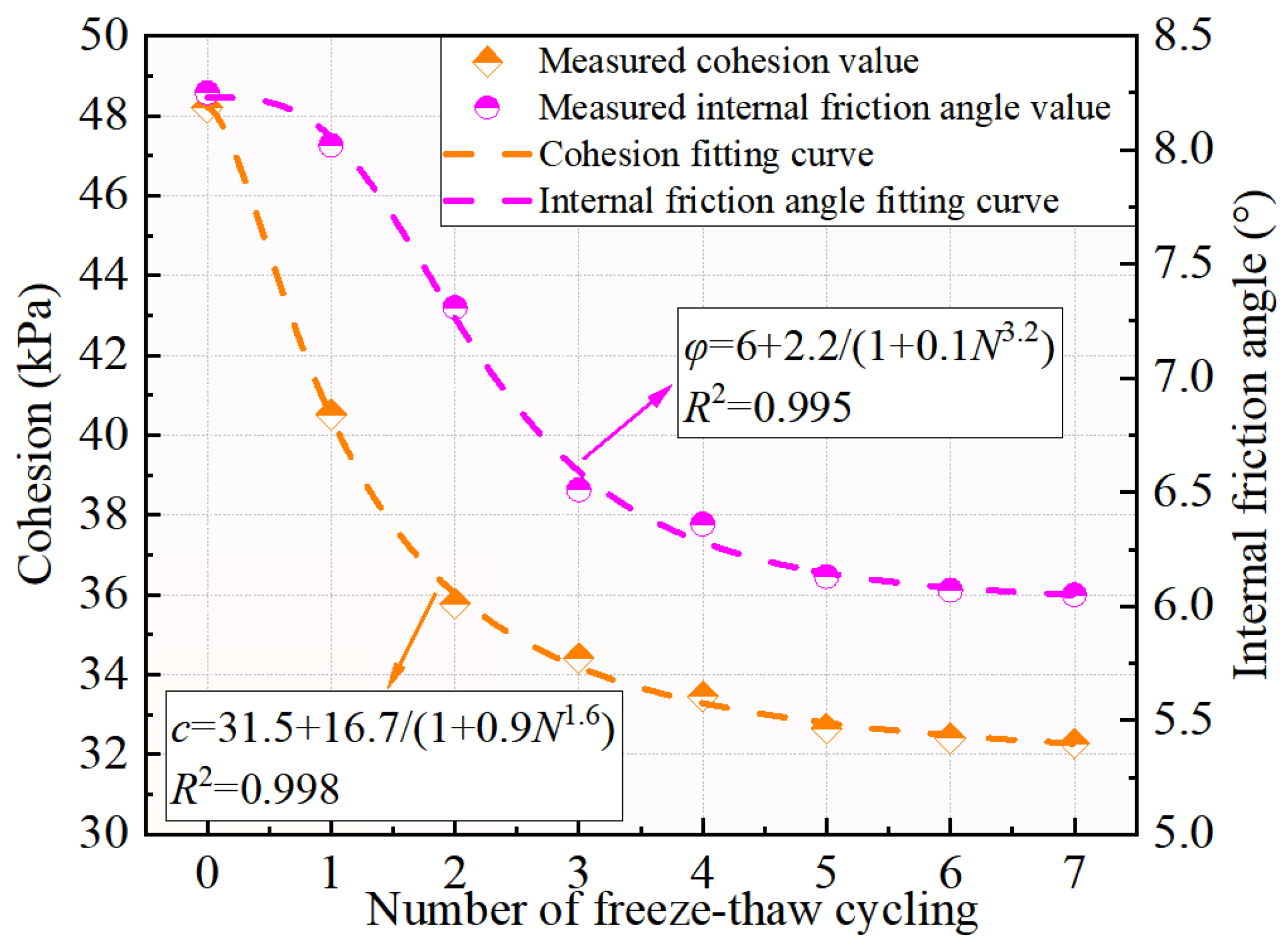
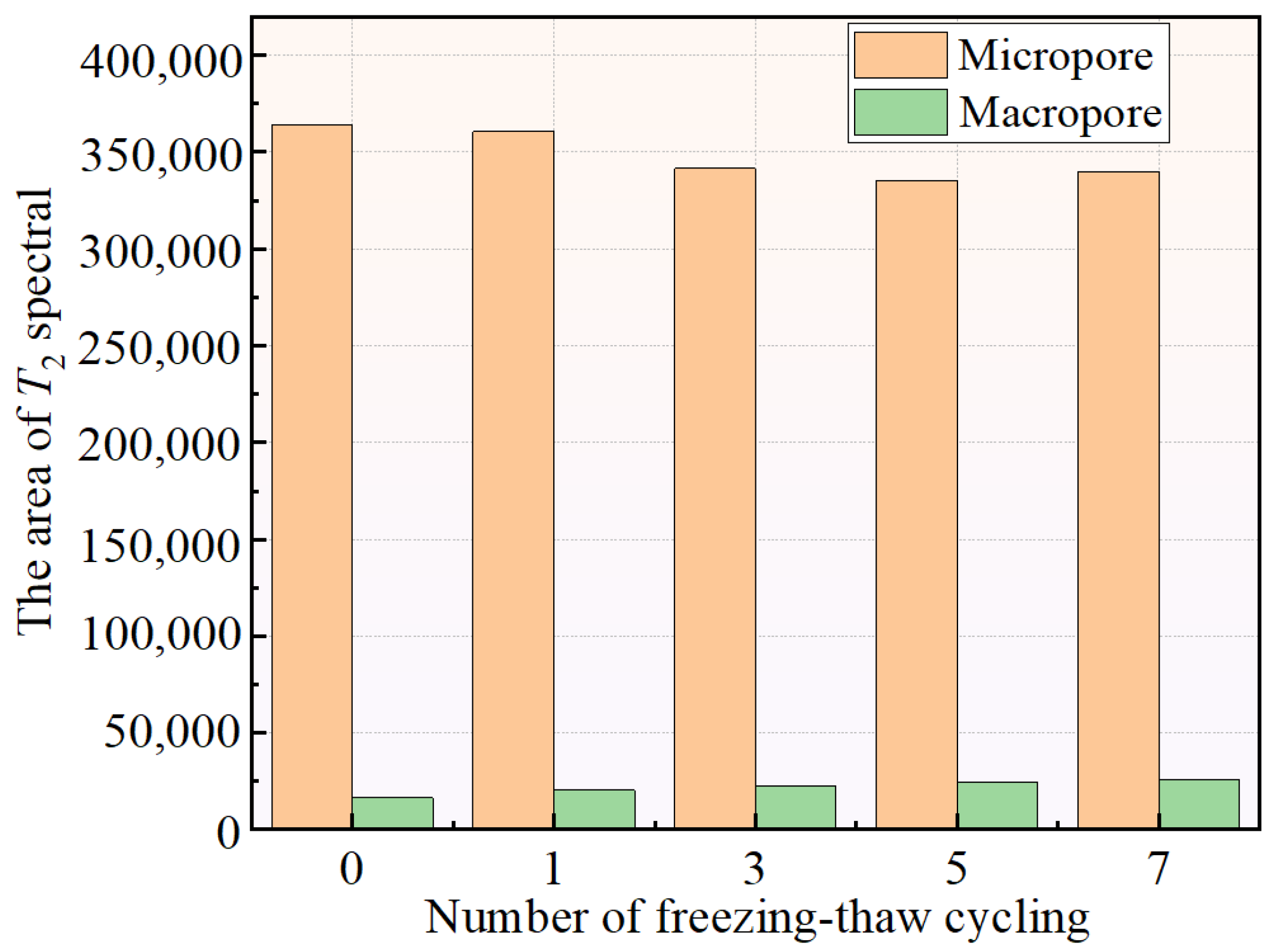
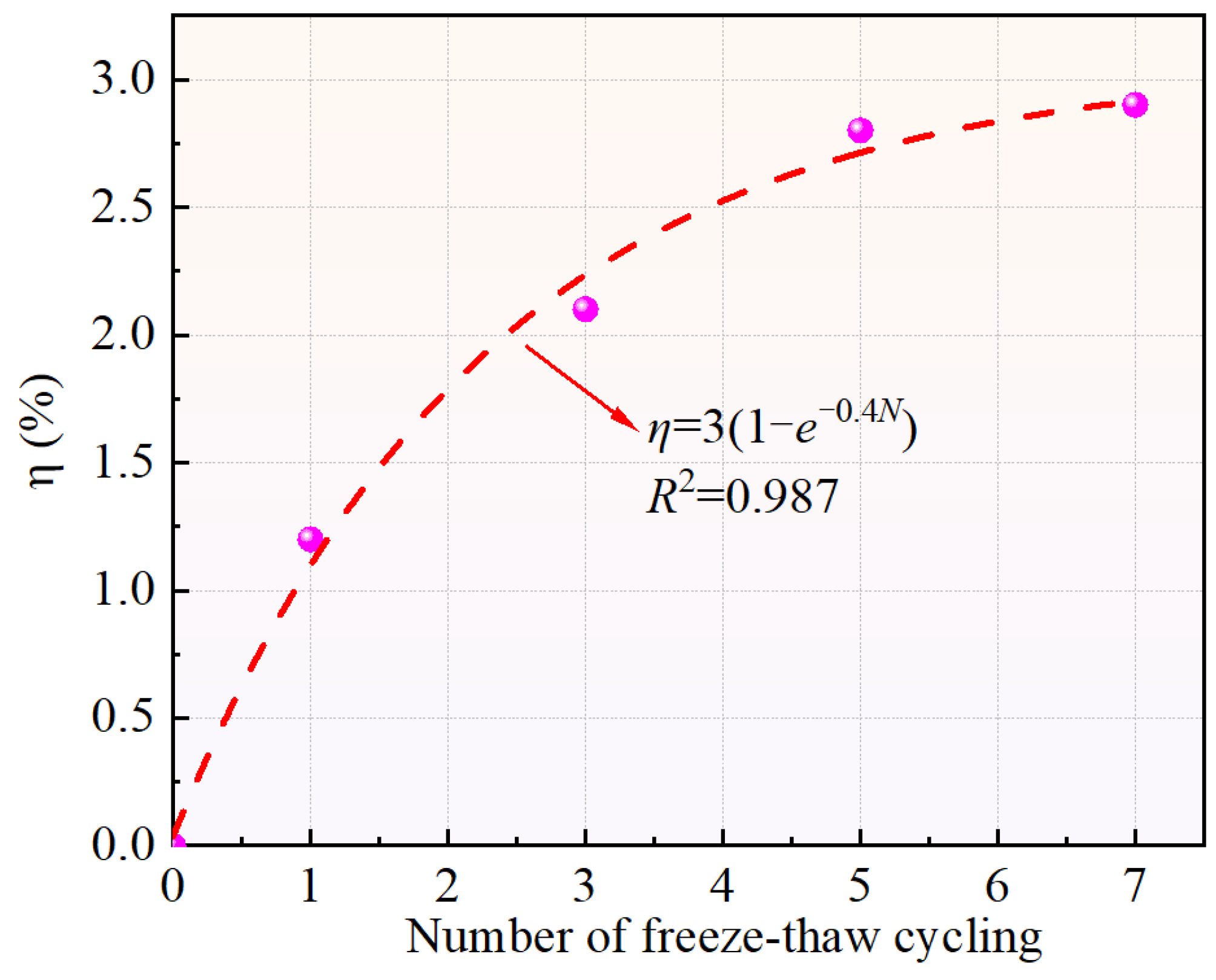
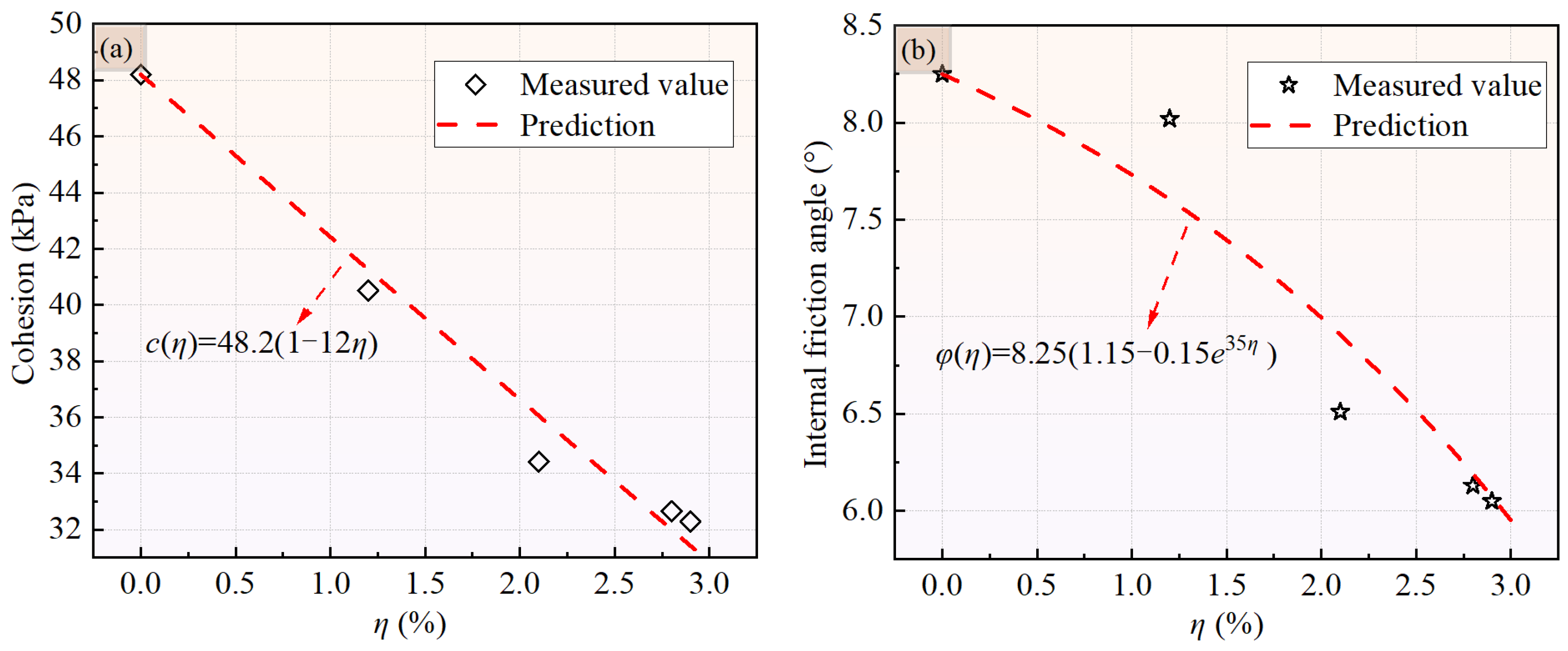

| Natural Moisture Content (%) | Specific Gravity | Liquid Limit (%) | Plastic Limit (%) | Dry Density (g/cm3) | Optimal Moisture Content (%) | Maximum Dry Density (g/cm3) |
|---|---|---|---|---|---|---|
| 24.3 | 2.78 | 45.5 | 23.9 | 1.63 | 18.9 | 1.685 |
| Sampling Frequency (kHz) | Main Frequency (MHz) | Pulse 90° (μs) | Pulse 180° (μs) | Regulate First Data (ms) | Regulate Analog Gain (dB) | Regulate Digital Gain | Echo Time (ms) |
|---|---|---|---|---|---|---|---|
| 250 | 12 | 13.52 | 27.04 | 0.002 | 10 | 3 | 0.2 |
Disclaimer/Publisher’s Note: The statements, opinions and data contained in all publications are solely those of the individual author(s) and contributor(s) and not of MDPI and/or the editor(s). MDPI and/or the editor(s) disclaim responsibility for any injury to people or property resulting from any ideas, methods, instructions or products referred to in the content. |
© 2024 by the authors. Licensee MDPI, Basel, Switzerland. This article is an open access article distributed under the terms and conditions of the Creative Commons Attribution (CC BY) license (https://creativecommons.org/licenses/by/4.0/).
Share and Cite
Yu, Y.; Zhang, Z.; Dai, F.; Bai, S. A New Shear Strength Model with Structural Damage for Red Clay in the Qinghai-Tibetan Plateau. Appl. Sci. 2024, 14, 3169. https://doi.org/10.3390/app14083169
Yu Y, Zhang Z, Dai F, Bai S. A New Shear Strength Model with Structural Damage for Red Clay in the Qinghai-Tibetan Plateau. Applied Sciences. 2024; 14(8):3169. https://doi.org/10.3390/app14083169
Chicago/Turabian StyleYu, Yanhai, Zhihong Zhang, Fuchu Dai, and Shunguo Bai. 2024. "A New Shear Strength Model with Structural Damage for Red Clay in the Qinghai-Tibetan Plateau" Applied Sciences 14, no. 8: 3169. https://doi.org/10.3390/app14083169
APA StyleYu, Y., Zhang, Z., Dai, F., & Bai, S. (2024). A New Shear Strength Model with Structural Damage for Red Clay in the Qinghai-Tibetan Plateau. Applied Sciences, 14(8), 3169. https://doi.org/10.3390/app14083169





